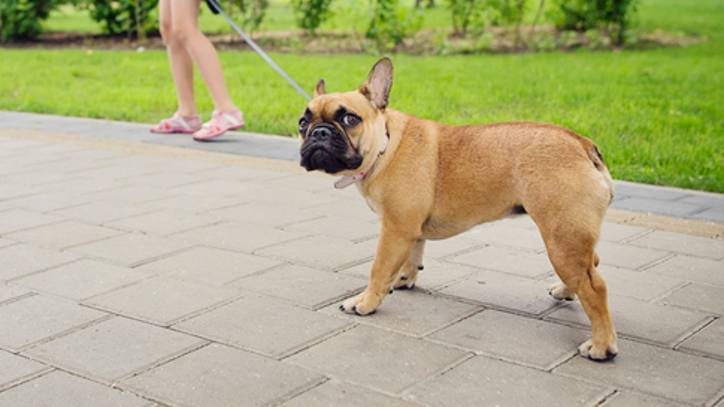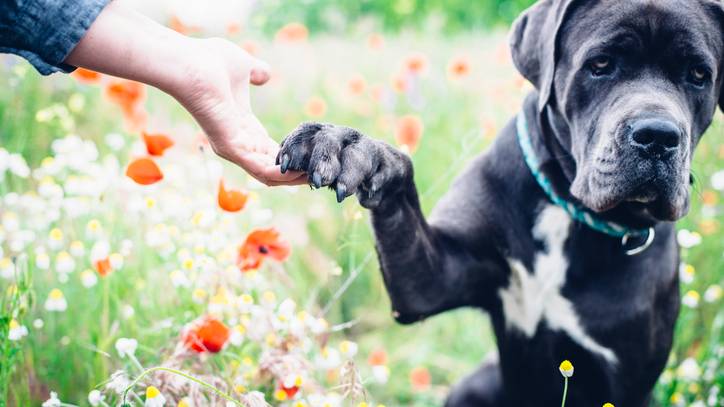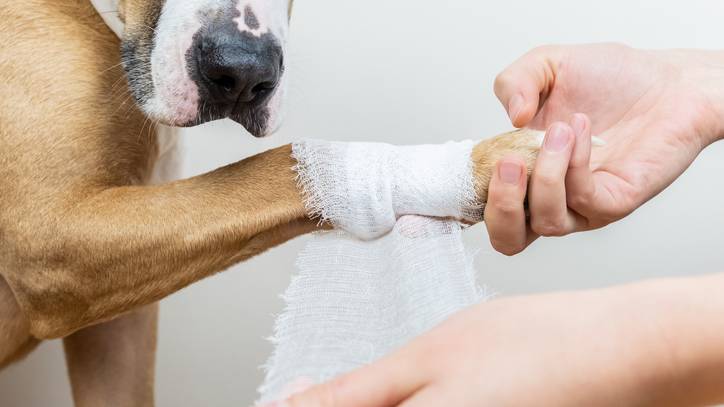Burned dog paws: Vet's guide to signs, causes and treatment
Find out how your pooch’s paws can get burned and discover how to prevent and treat this painful condition with our expert vet advice

Your dog’s adorable paws may be ready to take on the toughest terrains, but they’re surprisingly vulnerable to burns, particularly in the summer months when asphalt and concrete sidewalks become overheated. Hot, dry sand on beaches can also cause burns, while household products such as lawn pesticides and bleaches can result in nasty chemical burns. Even ice melt and products containing salt can do serious damage if you’re not careful.
Severe burns, as well as being very painful for your dog, take a long time to heal and can also increase your dog’s risk of developing an infection.
So to keep your canine companion’s tootsies in the best of health, we've enlisted the help of a trusted vet expert. From avoiding burned paws with some simple precautionary steps to spotting the signs and symptoms of burned paws, we’ve got everything you need to ensure your dog’s paws are protected and treated correctly in the event of burns.
Plus we have further advice on protecting your pooch from other seasonal accidents, injuries and conditions, such as heatstroke and mosquito bites. Here’s a vet’s advice on preventing, spotting and treating burned paws.
Causes of burned dog paws
Just like when it comes to red paws on dogs, there can be several potential causes of dog paw burns...
- Hot surfaces Tarmac, asphalt and fake grass are the most common culprits! They absorb heat throughout the day and retain it well, meaning they stay hot for quite some time.
- Ice Did you know that freezing cold can burn too? Icy surfaces can cause nasty burns.
- Salt The salt used for de-icing the roads and pavements can cause chemical burns. Dogs also have a tendency to lick it off, which then irritates the gut, resulting in nasty vomiting and diarrhea.
- Chemicals Many chemicals can cause burnt paws, with the added danger that your dog may lick the chemical off
Naturally, if your dog stepped on anything hot (such as hot coals, a hob or boiling water) then their paws would also burn!
While these types of injuries are (thankfully) less common, it’s important to be aware of all potential hazards.
Get the best advice, tips and top tech for your beloved Pets
Signs and symptoms of burned dog paws
So, how do you know if your dog’s paw is burnt? This may sound like a silly question, but the burns aren’t always obvious straight away. Here are the symptoms to look out for:
- Limping, or lameness that shifts between legs
- Reluctance to walk
- Licking or chewing their paws
- Reluctant to let you look at or touch their paws
- Patchy discoloration of the paw pads
- Blistered paw pads
- Peeling paw pads, or flaps of skin
Of course, these symptoms can be caused by other conditions too! So if you notice any of these signs, it’s important to have them checked by your vet, rather than assuming the cause.

What to do if you notice burned paw pads
If you notice any of the above symptoms of burned paws, you need to take your dog to see their vet.
Burns are very painful, so your dog will need veterinary prescribed pain relief alongside treatment for the burns. Burns are also prone to becoming infected, so your vet will need to assess them and give antibiotics if needed.
If you’re wondering how to treat burned dog paws at home, here are the steps to follow:
- Run the pads under cool water for around ten minutes. This will cool the area, as well as washing off any residual chemicals or salt if this was the cause. Never use ice or iced water and don’t apply any ointments or creams yourself.
- Place clingfilm loosely over the paws, being very gentle of course. You can keep it in place with a loose bandage or sock. This should only be a temporary measure, to be kept on for a short time while you seek medical advice.
- Call your vet! They will book you an appointment so that they can assess the wounds, prescribe any pain relief or antibiotics needed, and apply specialist dressings. If possible, use a car rather than walking your dog to the appointment.
Your vet may then ask you to apply creams or change dressings at home and will give your instructions on how to do so.

How long do dog paw burns take to heal?
Healing of dog paw burns can be lengthy, taking anywhere between 7 days and several weeks. It’s hard for an area to heal when it's constantly having pressure put on it!
During this time, you will need to avoid walking on rough surfaces and keep the area clean and dry.
Preventing burned dog paws
As with most things, prevention is better than cure! Here are our top tips for preventing burned dog paws:
- The pavement test: On hot days, place the back of your hand on the surface you’re considering walking on for at least 7 seconds. If it’s too hot to comfortably hold your hand there, it’s too hot to walk your dog on!
- On hot days, don’t walk your dog during peak sun and stick to grassy areas. Walk early in the morning, late in the evening, or not at all! Remember that heatstroke is a very real danger too.
- Rinse your dog’s paws in cool water after a walk, especially if you know the grit lorries have been out.
- Avoid walking in icy conditions.
- Consider using dog boots in winter to protect from ice and salt, if your dog will tolerate them!
- Avoid using harsh chemicals for cleaning. If you do, make sure you keep them out of reach and rinse the floor thoroughly with water after use.
While prevention is naturally best, of course, accidents do happen. So if your dog does burn their paws, now you know what to do!
Summary
Burned dog paws are painful and at risk of becoming infected. Of course, prevention is better than cure if possible! If your dog does burn their pads, it’s important to call your vet, even if the burn seems mild. Dogs can be surprisingly stoic, and pads can be hard to assess!
Sarah-Jane Molier graduated in 2009 and has been enjoying life as a vet ever since. She currently works as Head Veterinarian in a small animal practice. Sarah-Jane particular enjoys internal medicine, alongside her managerial role. When not working in practice Sarah-Jane enjoys sharing her knowledge and helping pet parents by writing on a wide variety of animal health and medicine topics. In her spare time Sarah-Jane loves walking Nero (her rescue dog), gardening with her two young children and reading.

